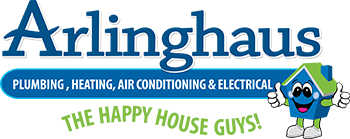As temperatures drop, the question, “Should you turn off the water if pipes are frozen?” becomes a crucial concern for most homeowners. In this blog, we will discuss what to do when your pipes freeze and how to prevent damage to your plumbing system.
Should I Shut Off the Water if My Pipes Freeze?
Dealing with frozen pipes can be extremely overwhelming, so it can be difficult to know what you should do when this situation occurs. So, should you turn off the water if pipes are frozen?
The short answer is yes. Turning off the water supply is a crucial step when you discover that your pipes are frozen. This measure helps in mitigating the risk of pipe bursts, which can lead to extensive water damage. Frozen water pipes expand as the ice forms, putting immense pressure on the pipes. If the pipe bursts, it can result in a significant amount of water spilling into your home. Therefore, shutting off the main water supply can prevent this catastrophic scenario.
Why Shutting Off Water Is Essential
As you can see, you should turn off the water if pipes are frozen. There are several reasons why it’s important to take this step, including the following:
- Prevents Pipe Bursts: By stopping the water flow, you reduce the pressure on the frozen section, thereby decreasing the likelihood of a burst pipe.
- Minimizes Water Damage: In case a pipe has already burst, shutting off the water supply immediately can significantly reduce the extent of water damage.
- Safety First: Water leaks can lead to electrical hazards and structural damage. It’s safer to have the water supply turned off while resolving the issue.
Steps to Take When Your Pipes Freeze
Discovering that you have frozen pipes can be alarming, but taking systematic steps can help you manage the situation effectively. If you’re unsure what to do when your pipes freeze, we’re here to guide you through some of the most crucial steps that you should take.
Step 1: Identify the Frozen Section
Locate the frozen pipe. Common signs include no water flow from faucets and visible frost on exposed pipes. Pipes located in unheated areas, crawl spaces, or near exterior walls are more prone to freezing.
Step 2: Turn Off the Main Water Supply
Locate your main water shut-off valve and turn it off. The main shut-off valve controls the flow of water into your home’s plumbing system. Knowing its location is essential for every homeowner. As we already mentioned, this action is crucial to prevent pipes from bursting and causing water damage.
Step 3: Begin Thawing the Pipes
Consider using a space heater, heat lamp, or hair dryer to gently warm the frozen section of the pipe. These tools provide a controlled source of heat, which can effectively and gradually melt the ice within the pipe. Never use open flames, as this can be hazardous.
Step 4: Open Faucets
Open the faucets connected to the frozen pipe. Doing so serves two critical functions: firstly, it relieves any built-up pressure within the pipe. This is crucial because pressure build-up can lead to pipe bursts, causing significant damage. Secondly, opening the faucets creates an outlet for water to flow as the ice begins to melt.
Step 5: Inspect for Leaks
Once the pipes in your home have thawed, it’s crucial to conduct a thorough inspection to identify any potential cracks or leaks. Even the smallest crack can become a significant issue, as it may lead to substantial water damage over time. Water damage not only affects the structural integrity of your home but can also promote the growth of mold and mildew, which are harmful to health.
Step 6: Call a Professional Plumber
If you find yourself in a situation where you are unable to locate a frozen section in your plumbing or if you’re facing the aftermath of a burst pipe, it’s crucial to act swiftly and efficiently. In these scenarios, the best course of action is to seek professional assistance. At Arlinghaus, we’re proud to provide top-notch emergency plumbing services, which are specially designed to handle such critical situations.
Contact Our Emergency Plumbers Today!
So, should you turn off the water if pipes are frozen? As you can see, the answer to this question is a resounding “yes.” However, there are various other steps you should take to ensure the safety of your household.
Dealing with frozen pipes can be challenging, but understanding what to do can make a significant difference. Remember, if you’re in doubt or facing a pipe burst, it’s time to call the professionals. Arlinghaus is here to help the residents of Cincinnati, OH, Erlanger, KY, and surrounding areas with all their plumbing needs. Whether it’s a frozen pipe, water heater issues, or emergency drain service, our team of expert plumbers is just a call away.
Experiencing frozen pipes? Don’t wait for a burst to occur. Now that you know what to do when your pipes freeze, contact Arlinghaus for professional assistance. Our emergency plumbers in Cincinnati offer a comprehensive range of plumbing services. Contact us today for more information or to schedule a service. Remember, preventing damage is always better than repairing it. Trust Arlinghaus to keep your home safe and your water flowing smoothly!


